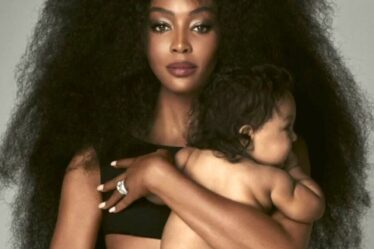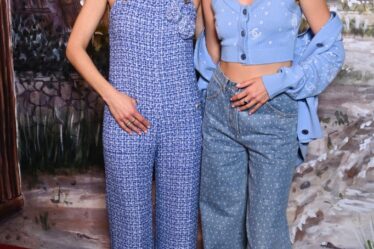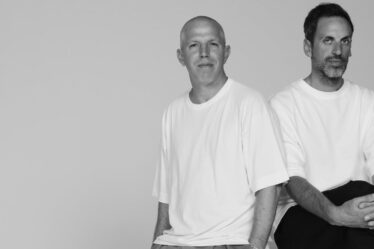
Understanding your unique face shape is more than a mere vanity exercise; it is a cornerstone of personal style, grooming expertise, and self-presentation.
In modern society, where visual impressions carry unprecedented significance, mastering the nuances of facial structure can provide an invaluable advantage in personal and professional spheres.
In this comprehensive analysis, we’ll delve into the intricate world of men’s face shapes, providing a deeper understanding of how facial structure influences your hairstyle, eyewear, and accessories selection.
The Main 6 Face Shapes for Men
1. Oval Face Shape
Imagine an egg standing upright—that’s essentially an oval face shape.
This face shape is described in various ways across different sources, such as the egg-shaped face, elliptical face shape, balanced face, medium-long face, proportional face shape, or classical face shape.
The length of an oval-shaped face is about one and a half times its width, and the forehead and jaw are slightly narrower than the cheekbones, but the differences aren’t dramatic.
The sides of the face curve gently rather than having sharp angles.
Think of actors like Idris Elba, George Clooney, Jude Law, or Jake Gyllenhaal—they all have oval faces in various variations.
The oval face shape serves as a kind of baseline for other shapes, as many face shapes are essentially variations of the oval – either stretched, widened, or angular.
That’s why you’ll sometimes hear people say oval is the “ideal” face shape, though this is more about its versatility than actual appearance.
2. Round Face Shape
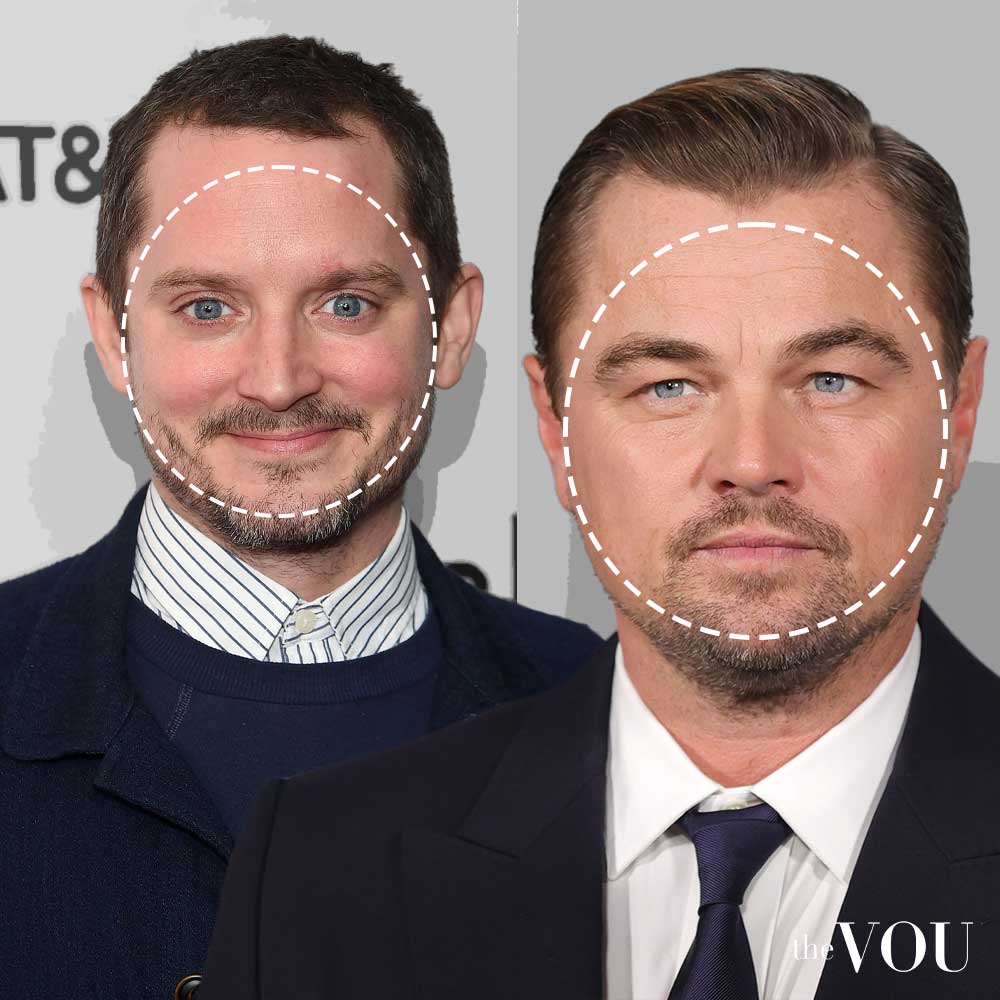
Picture a circle with softened edges—this represents the round face shape.
You’ll find this shape referred to as circular face, soft square, full face, curved face, cherubic face shape, moon face, or compact face shape.
A round face features similar width and length measurements, with soft curves rather than angles dominating the features.
The cheeks are typically the widest part of the face, with a gently curved jawline that lacks sharp angles.
Think of celebrities like Leonardo DiCaprio and Elijah Wood. Notice how their faces appear full without sharp angles.
The roundness doesn’t mean a lack of definition; it’s simply a different kind of facial structure that can look equally masculine and appealing.
Many young men have round faces as this shape often appears more youthful, and the features might become more angular with age.
3. Square Face Shape
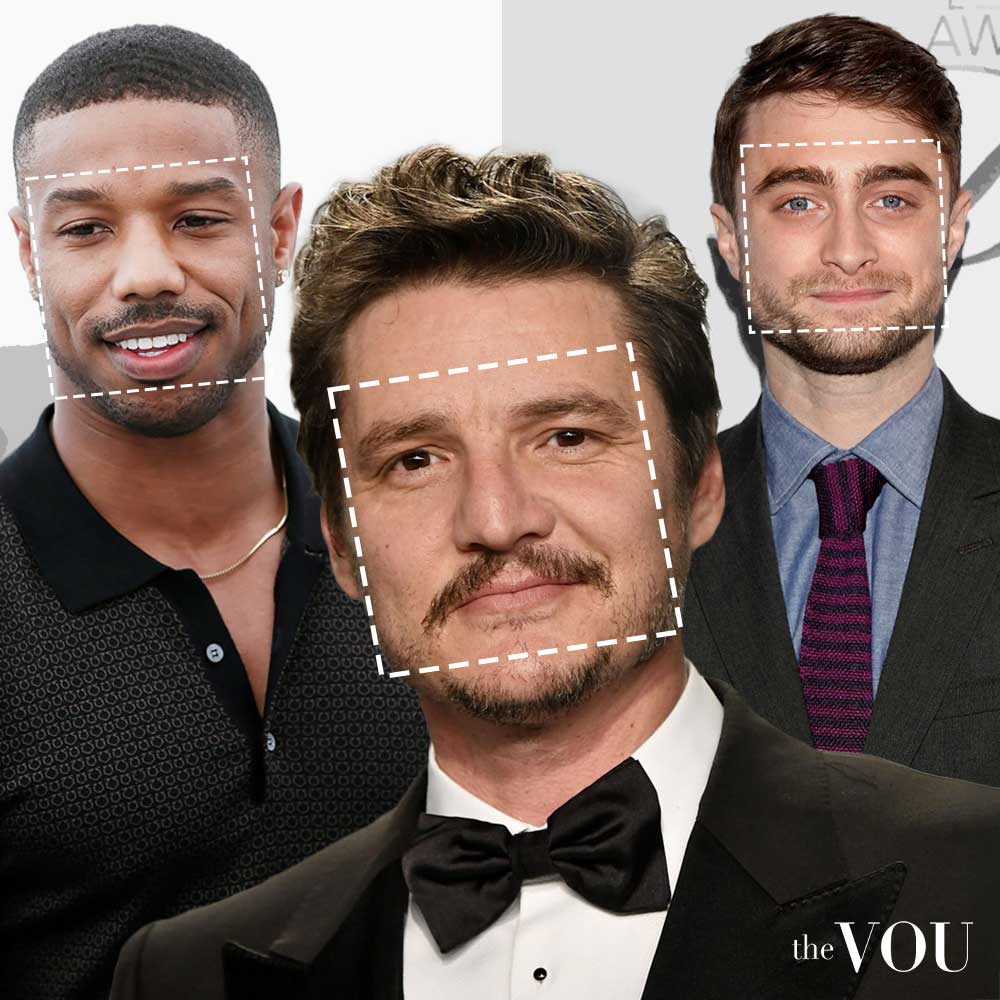
Think of a strong, evenly proportioned box – that’s the square face shape.
This shape goes by many names: angular face, strong jaw face, muscular face, boxed face, chiselled face, symmetrical square, or masculine face shape.
Square faces feature similar measurements across the forehead, cheekbones, and jawline, creating an even, powerful appearance.
The essential characteristic is the presence of sharp angles, particularly at the jaw, distinguishing it from the round face shape.
Look at celebrities like Pedro Pascal, Daniel Radcliffe, Michael B. Jordan, and Simu Liu – their faces showcase clear angles and similar width-to-length proportions.
The square face shape is often considered traditionally masculine due to its strong lines and defined features.
Many men with square faces find that their strong bone structure effectively allows them to carry both clean-shaven and bearded looks.
4. Rectangle Face Shape
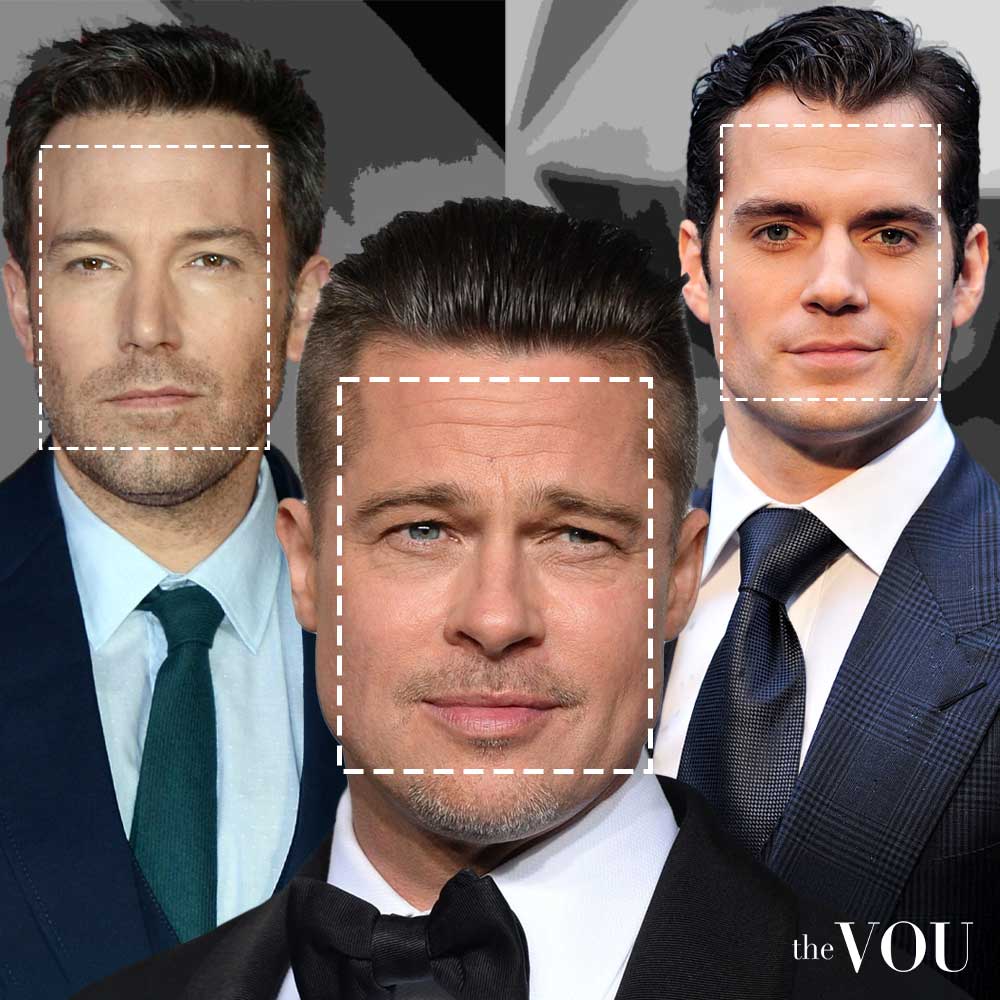
Envision a square face that’s been stretched vertically—welcome to the rectangle face shape.
You might hear it called oblong face, extended square, long face, linear face shape, stretched face, elongated face, or narrow face shape.
Rectangle faces maintain the angular features of a square shape but with notably greater length than width.
The forehead, cheekbones, and jawline typically share similar width measurements, creating straight, parallel sides.
Consider actors like Henry Cavill, Brad Pitt, Ben Affleck and Russell Crowe as prime examples of rectangular face shapes.
Some sources use “oblong” and “rectangular” interchangeably, though oblong faces might feature slightly softer corners.
This shape benefits from styles that add width rather than height, helping to create more balanced proportions.
5. Diamond/Heart Face Shape
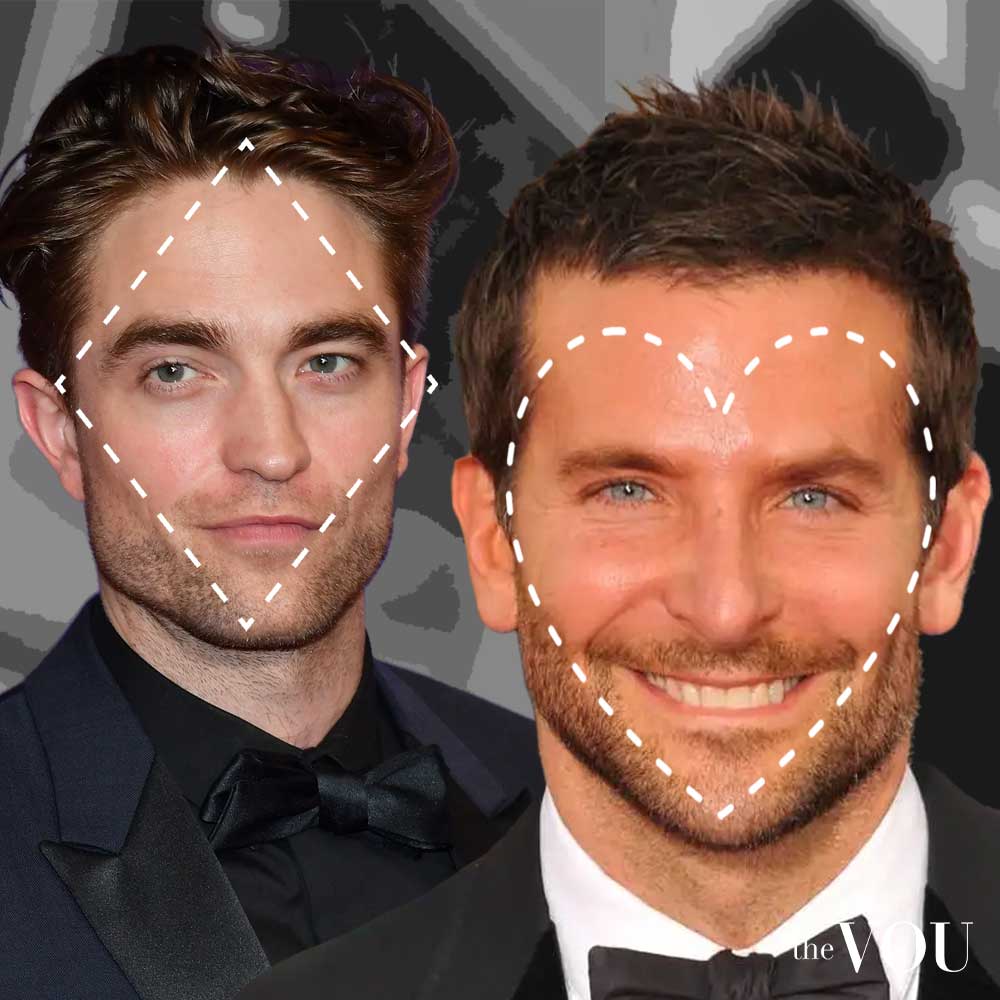
Picture a traditional diamond or an inverted triangle – these shapes capture the essence of the diamond and heart faces.
Diamond faces are also known as angular heart shapes, pointed jaw shapes, narrow forehead shapes, or cheekbone-dominant faces.
Heart-shaped faces are also called inverted triangles, Valentine face shapes, wide forehead shapes, or pointed chin faces.
The key difference lies in their widest points: diamond faces peak at the cheekbones, while heart shapes are widest at the forehead.
Robert Pattinson demonstrates diamond face characteristics, while Henry Golding, Bradley Cooper and Nick Jonas show more heart-shaped features.
These shapes share enough similarities to be grouped, particularly regarding styling approaches.
A widow’s peak hairline often accompanies heart shapes, though it’s not required.
6. Triangle Face Shape
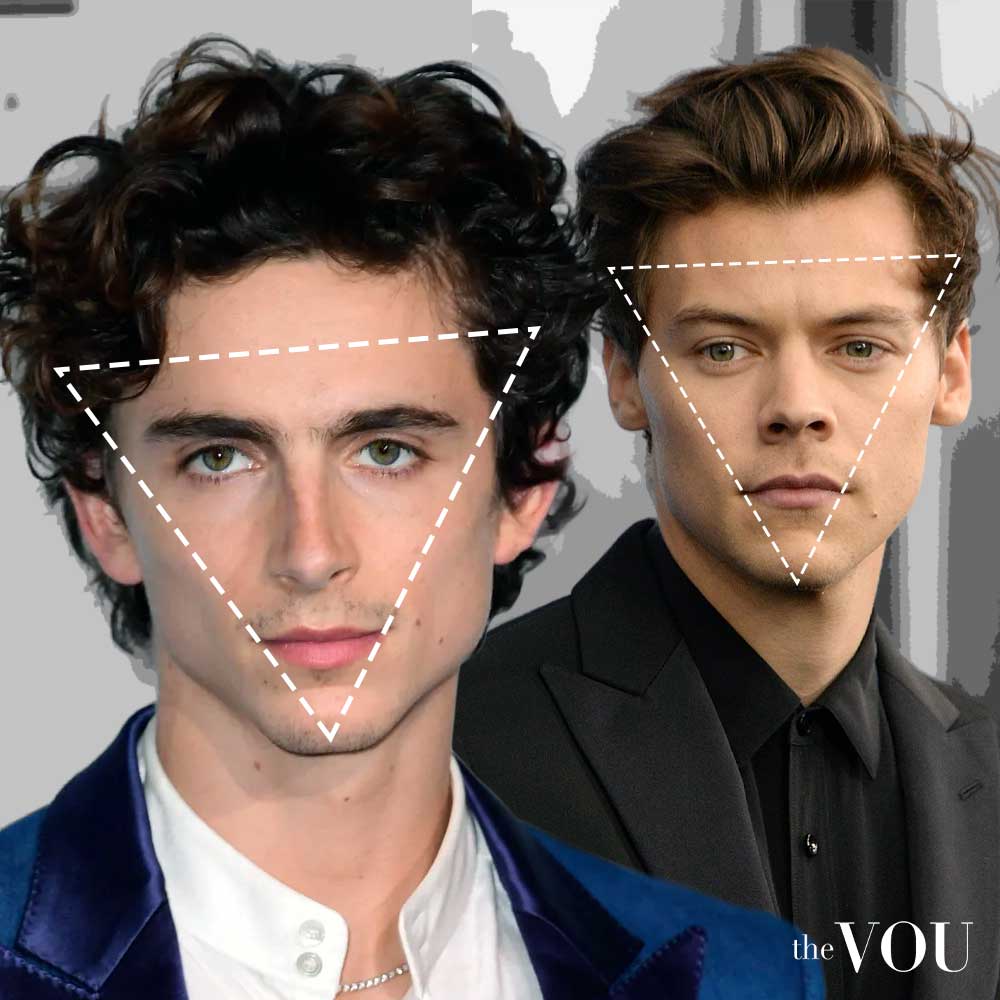
Visualise an upside-down triangle – that’s the essence of this distinctive face shape.
Alternative names include pear face shape, pyramidal face shape, wide jaw face shape, narrow forehead face shape, inverted pyramid face shape, or base-heavy face shape.
The defining feature is a jaw wider than the forehead, with the face gradually narrowing from bottom to top.
Unlike the diamond or heart shape, the widest point sits at the jawline rather than the cheekbones or forehead.
Celebrities like Timothée Chalamet and Harry Styles display triangular face characteristics.
While some guides might combine this with other categories, its distinct features and styling needs warrant separate classification.
Triangle faces can appear particularly masculine due to their strong jaw structure, though many men prefer to balance this feature through styling choices.
Face Shape Analysis Scientific Foundation
The study of facial proportions dates to ancient civilisations, where Greek sculptors employed the golden ratio to create representations of ideal beauty.
During the Renaissance, Leonardo da Vinci’s Vitruvian Man further explored the mathematics of human proportion, establishing principles that continue to influence the modern understanding of facial harmony.
In the Victorian era, physiognomy – an approach that’s nowadays largely discredited – brought facial analysis into mainstream consciousness.
The early 20th century saw the emergence of more scientific approaches, with anthropologists and aesthetic specialists developing systematic methods for categorising facial structures.
This evolution culminated in the modern understanding of face shapes, which combines classical principles with contemporary styling expertise.
Modern facial analysis relies upon anthropometric measurements—the scientific study of human body measurements.
The discipline identifies key facial landmarks and proportions that determine individual face shapes.
Understanding these measurements is essential for medical professionals, aesthetic specialists, and style consultants.
The trichion (hairline) and gnathion (bottom of chin) establish facial length, whilst the zygoma (cheekbones) and gonion (jawline angles) define facial width.
These points are critical in creating the framework for identifying distinct face shapes.
Classical facial analysis divides the face into thirds vertically: forehead to brow, brow to nose base, and nose base to chin.
Horizontally, the ideal proportion suggests the face width should measure approximately two-thirds of its length.
However, these proportions vary naturally, creating the distinctive characteristics of different face shapes.
Importance of Face Shape Analysis
Understanding one’s face shape extends beyond academic interest—it provides practical advantages in numerous aspects of personal grooming and style.
This knowledge influences decisions regarding hairstyles, facial hair, eyewear selection, and clothing choices, particularly necklines and collars.
Professional image consultants and stylists consider face shape analysis fundamental to their craft.
This understanding enables them to make recommendations that enhance their clients’ natural features whilst minimising less desirable characteristics.
In the modern professional landscape, where personal presentation carries significant weight, such knowledge proves invaluable.
Despite its significance, face shape analysis suffers from several persistent misconceptions.
Many gentlemen incorrectly believe they must conform strictly to one category when in reality, combination shapes prove common.
Others mistakenly think face shapes remain static throughout life, overlooking the influence of age, weight fluctuation, and other factors on facial structure.
Perhaps the most pervasive misconception suggests that specific face shapes prove inherently more desirable than others.
Each shape presents unique advantages and styling opportunities, so the aim is not to attempt to alter your natural shape but to understand how to enhance it through informed styling choices.
Understanding Your Face Shape
Finding your face shape doesn’t require complex measurements or professional analysis.
While we’ve created a comprehensive quiz to help you determine your face shape accurately (link to quiz here), understanding some basics can help you get started.
Your face shape might not perfectly match any single category—this is completely normal and quite common.
Think of face shapes as guidelines rather than rigid categories, helping you make better styling choices rather than limiting them.
How Face Shapes Change
Your face shape isn’t permanently fixed—it can change throughout your life for several reasons.
Weight fluctuations often affect face shape first; gaining weight typically makes features rounder, while weight loss can reveal more angular structures.
Age naturally impacts face shape as we lose facial volume over time—this is why some men find their round faces become more angular as they mature.
Facial hair can dramatically alter how your face shape appears to others—a well-groomed beard can reshape a pointed chin, balance a wide forehead, or add width to a narrow jaw.
Even muscle development through activities like chewing or facial exercises can subtly alter your face shape over time.
Working with Combination Face Shapes
Many men discover they have characteristics of multiple face shapes—for example, a face might be oval with slightly diamond-like cheekbones.
The most common combinations include oval-diamond, square-rectangle, and round-oval variations.
Instead of trying to fit strictly into one category, identify your strongest characteristics and use these as your primary styling guide.
Consider which features you’d like to enhance or balance rather than worrying about fitting perfectly into one face shape category.
Styling Recommendations by Feature
Rather than following strict face shape rules, consider your specific features:
Strong jaw? You might benefit from styling tips for square and triangle face shapes, regardless of your overall face shape.
High cheekbones? Look at recommendations for diamond face shapes, even if that’s not your primary shape.
Wide forehead? Heart shape styling tips might work well for you, even if the rest of your face follows a different pattern.
Long face? Incorporate advice for rectangle shapes, while still considering your other features.
The Role of Proportion
Understanding your face’s proportions matters more than fitting into a specific category.
Consider the relationship between your forehead, cheekbones, and jawline—these proportions guide your styling choices more than any face shape label.
Think about your face’s width-to-length ratio, as this helps determine which styling approaches will work best for you.
Remember that your hairstyle, beard, and accessories can adjust these proportions to create your desired effect.
Styling Tips by Face Shape
Styling Recommendations for Oval Faces
Your versatile face shape works with most styles, but here’s how to maximise your balanced features.
Hairstyles that maintain your natural balance work best—think classic cuts with clean lines and proportionate length.
Keep your face’s natural symmetry by avoiding styles that fall too heavily to one side or add excessive bulk anywhere.
For beards, nearly all styles work well—from stubble to full beards—just maintain clean lines that follow your jaw’s natural curve.
Glasses frames should mirror your balanced proportions. Frames slightly wider than your cheekbones typically look best.
Avoid extremely oversized frames or tiny specs that could disrupt your face’s natural harmony.
Styling Recommendations for Round Faces
Your styling goal is to create definition while maintaining your face’s natural charm.
Hairstyles with height at the crown and shorter sides create the illusion of a longer face shape.
Avoid cuts that end at your cheekbones, as these can emphasise facial roundness.
Beard styles that extend below the jaw add length to your face—try a goatee or an oval-shaped full beard.
Angular glasses frames create definition—rectangular or square shapes work particularly well.
Stay away from round frames that might emphasise your face’s circular shape.
Styling Recommendations for Square Faces
Your strong features give you plenty of styling options—you can either enhance or soften your angular structure.
Hairstyles can either embrace your angles with clean, sharp cuts or soften them with textured styles.
Short sides with longer, messier tops help maintain masculinity while softening sharp angles.
Beard styles can follow your strong jaw for added definition, or be slightly rounded to soften angles.
Round or oval glasses provide an excellent contrast to your angular features.
Avoid very square frames that might make your face appear too rigid or severe.
Styling Recommendations for Rectangle Faces
Your goal is to maintain your strong structure while creating the illusion of width rather than length.
Hairstyles with volume at the sides work better than styles that add height.
Mid-length cuts that can be styled outward help break up your face’s length.
Fuller beard styles add width—consider a wider, rounded beard rather than one that extends your face length.
Wider glasses frames create the impression of a broader face.
Avoid narrow frames or very small glasses that might emphasise your face’s length.
Styling Recommendations for Diamond/Heart Faces
Your distinctive cheekbones or forehead provide excellent features to work with.
Hairstyles that add width at the forehead and temples help balance diamond-shaped faces.
For heart shapes, styles that reduce width at the forehead while adding volume at the chin create balance.
Beard styles can add valuable width to a narrow chin—consider a full beard that builds gradually.
Glasses should align with your cheekbones while softening your angular features.
Avoid frames that are too heavy at the top or extremely narrow at the bottom.
Styling Recommendations for Triangle Faces
Your styling approach should focus on balancing your stronger jaw with your narrower forehead.
Hairstyles with volume on top and at the temples help create balance with your jaw.
Avoid very short sides that might emphasise your jaw’s width.
Keep beard styles shorter and well-groomed to prevent adding extra width to your jaw.
Glasses should add width to your upper face—try frames that are wider at the top.
Avoid frames that are heavier at the bottom or very narrow at the top.
Style Like A True Gentleman
Before we say goodbye, here’s one of the best-kept secrets in men’s styling circles, a secret that only a few expert image consultants know or are willing to share.
First and foremost, professional styling requires knowing your unique body shape and seasonal colour palette – paramount factors in choosing perfectly fitting clothes in colours that complement your skin, eyes, and hair.
Only then can a stylist engage in styling by occasion, location, season, and time of day, with garments, footwear, and accessories from stylistically relevant heritage fashion brands to depict high confidence and success.
Best part? You can find your body shape, seasonal colour palette, and ideal fashion style in less than 5 minutes by yourself, for free, thanks to our four simple steps:
1. Find Your Body Shape
Different garments flatter different silhouettes, so knowing your body shape is the first step in dressing like a confident man.
To find out your unique body shape, take our free body shape quiz for men.
Once you know your unique body shape, take the second free quiz to discover your unique colour palette.
2. Find Your Unique Colour Palette
Remember, the garments that compose your outfits come in various colours, and you must ensure that each hue complements your natural colour.
To do that, you have to find out your seasonal colour palette, and you can do it by taking our free seasonal colour quiz for men.
3. Find Your Ideal Fashion Style
By now, you should already know your body shape and unique colour palette; the next step is to discover your ideal personal fashion style.
The fastest and simplest way is to take our free fashion style quiz for men; it includes your ideal style, outfit ideas, relevant fashion brands, and much more.
4. Professional Image Consultancy with The VOU
And if you want to style like a professional, by occasion, location, season, and time of the day, you can always ask our expert image consultants and fashion stylists for help.
Our styling services for men are the most comprehensive and detailed on the market, backed up by leading stylists who will guide you step by step in creating looks that communicate affluence, elegance, and endless accomplishments.
Remember, wearing luxury brands isn’t enough; to look stylish, confident, and successful, you must first know your body shape, colour palette, and ideal personal style, and only then style by occasion, location, season, and time of day.
Contact us today to save headaches, time, and money – it’s time to dress like a confident, successful gentleman of exquisite fashion taste – the first styling assessment is on us!

